José Luis “Katira” Ramirez invokes the sacred five directions of the Huichol people in a benediction before the showing in Guadalajara (Courtesy: Huicholes Film)
SECOND OF TWO INTERVIEWS
See also: Interview with the Directors of Huicholes: The Last Peyote Guardians
José Luis “Katira” Ramírez was serving as the governor of his community of La Laguna, San Andrés Cohamiata, Jalisco, when he met Argentine filmmaker Hernán Vilchez. He was not like any governor Vilchez had ever met. A Huichol shaman, or marakame, dressed in his colorful native clothing and distinctive plumed hat, he stood out in the urban environment of Mexico City.
He had traveled far from his home in the Western Sierra Madre because his community was in crisis; the rains had not come in time, and the corn crop was ruined. He had come to the megalopolis to seek support for his people, who were in dire need with their failed harvest. Another crisis, too, loomed large in his mind: the fate of Wirikuta, the sacred land of his people, destined to be churned into ore by Canadian mining companies. He had no idea how it would be done, but he knew it had to be stopped. The fate of his people – and indeed, of the entire planet, according to his perspective – hung in the balance.
Hernán, for his part, was traveling the planet with his film crew, seeking subjects for a German reality show that portrayed the cultures and traditions of native peoples around the world. He asked Katira if he would be willing to participate in a filming of the program. Katira said he would consult with the elders of his community, and together they would decide.
Eventually the community gave their blessing, but they asked for something in return. They wanted Hernan to film the story of their struggle to save Wirikuta.
Katira’s family became the protagonists in the documentary, which follows the building of an extraordinary movement. I sat with Katira and with his son Clemente, a student at the University of Guadalajara, at the closure of the very intense Mexican film release tour to get a different perspective on the story behind the film. Producer Paola Stefani joined in at his invitation.
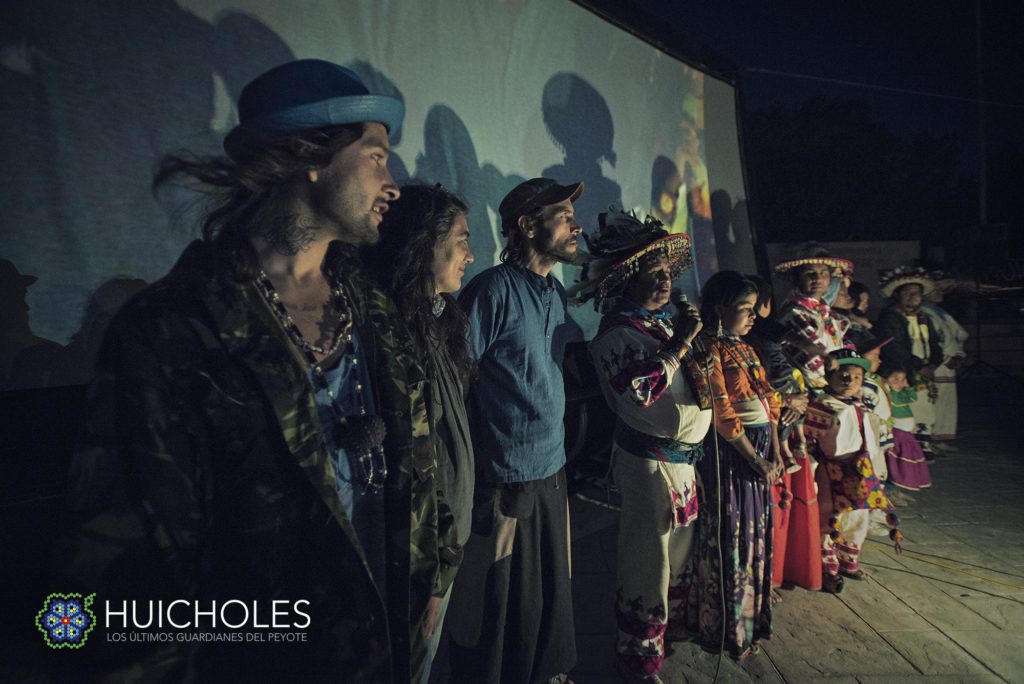
Tracy: Katira, how was it to live with this film crew in your house, in your life, filming every day? Because of what I know of the Wixarika people, it’s a very private culture, very discreet, and people value their privacy very much.
Katira: Yes, it was very difficult. There were many people who think many things and said things to us (critical things), but you only think of the defense. I always said in the assembly, you also should do the work, this is what it costs. If there’s no support, it’s painful, but one does it because really they do it from the heart, because really they love the Mother and the territory, and also we have rights as guardians on this planet.
Tracy: I know that there are various documentarians who go to the sierra and ask for permission to film. Hernán is not the first; so why did you choose him to do this movie?
Katira: He has a heart to especially know us. It wasn’t his first time to come to an indigenous community; he had been to communities all over the world with almost the same problems, the same needs. So when we met it was like we had already known each other for many years.
Tracy: What were the most difficult challenges for you in this process?
Katira: The difficult thing was the distances, and because of the distances the cost of everything – it’s very far and that’s why, with work and with sacrifice, we did it.
Don’t think it was cheap; each trip was 1500 euros, 1,000 euros, from my pocket, from my work, but working together and with a lot of economic sacrifice we were able to do everything we needed to complete this documentary, so one day people will understand.
Thank God my heart is very strong, because I wanted to leave something for the children, for the grandchildren, for the future, because I’m not going to live 500 years, 300 years, who knows what’s going to happen; so this was very important for me.
Tracy: I really loved the opening you gave to the film in Guadalajara – the ceremonial blessing, the invocation of the five directions. I was curious to know if you opened each of the presentations with a benediction like that one, or were they all different?
Katira: Very different. Sometimes we arrived rested; other times the director was really sick and weak from so much travel, with the rains, with headaches, we had to take care of each other that week of the release tour.
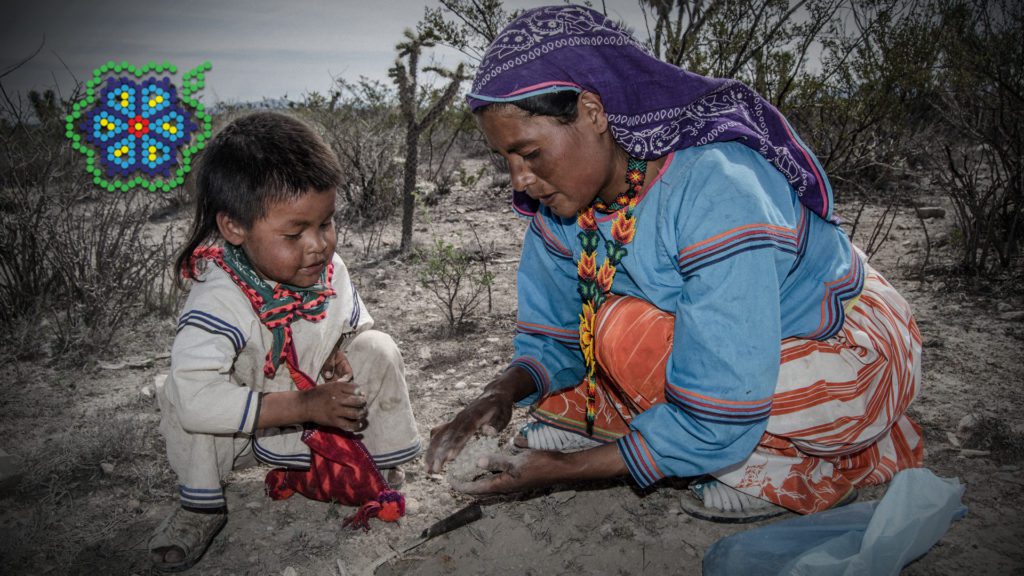
Tracy: Katira, I know as a marakame you are also a healer, among other things. Were there times when you served as a healer for the film crew?
Katira: Yes, laying the hands on energetically, healing, that’s how we’ve always cared for each other.
Tracy: I’ll bet you had a lot of work, no?
Katira: ¡Sí!
Tracy: And did the treatments work?
Katira: Here’s Paola; ask her.
Paola: Yes, he helped us a lot with the stress. The most stressed were Hernán, me and José Andrés (Solórzano, the photographer). On the tour we had moments of stress, and Katira calmed me down – with his words, with his hands, with his feathers, with the candle – yes, we had many moments, and we had many blessings.
In terms of the blessing at the opening of the film, we began the journey from this house, and we did the salute to the five directions, and we asked permission here in the patio of my house – we always had a ceremonial moment. Not necessarily in public, we didn’t plan anything. Yes, in Guadalajara we did it in public to give thanks that they were accompanying us. But every presentation was different. The one in Guadalajara was very beautiful, the benediction that Katira and his family gave, it was important. The morning after we arrived in Real de Catorce, Katira and the whole family climbed the Cerro Quemado (the sacred mountain in Wirikuta) to ask permission to show the film.
At each place we arrived, we asked permission – not always in public. Since it went so well in Guadalajara we were going to do it here in Mexico, but then we didn’t because it was raining. So each function was different. I think it’s something so much of the heart, it’s not a show. We went along doing what our hearts and our energy told us and what Katira finally decided. I liked very much that in Guadalajara Hernán and I didn’t even talk. In others Hernán and I talked, sometimes just Hernán, Katira always. It was like an open script.
Katira: Yes, so we were all taking care of each other. This was our strength, this was the most important, to have love and peace, this is what is required.
Tracy: And who treated you, Katira, when you had stress and headache?
Katira: I treated myself. My creator, the place I come from, the adored essence… that’s how it is.
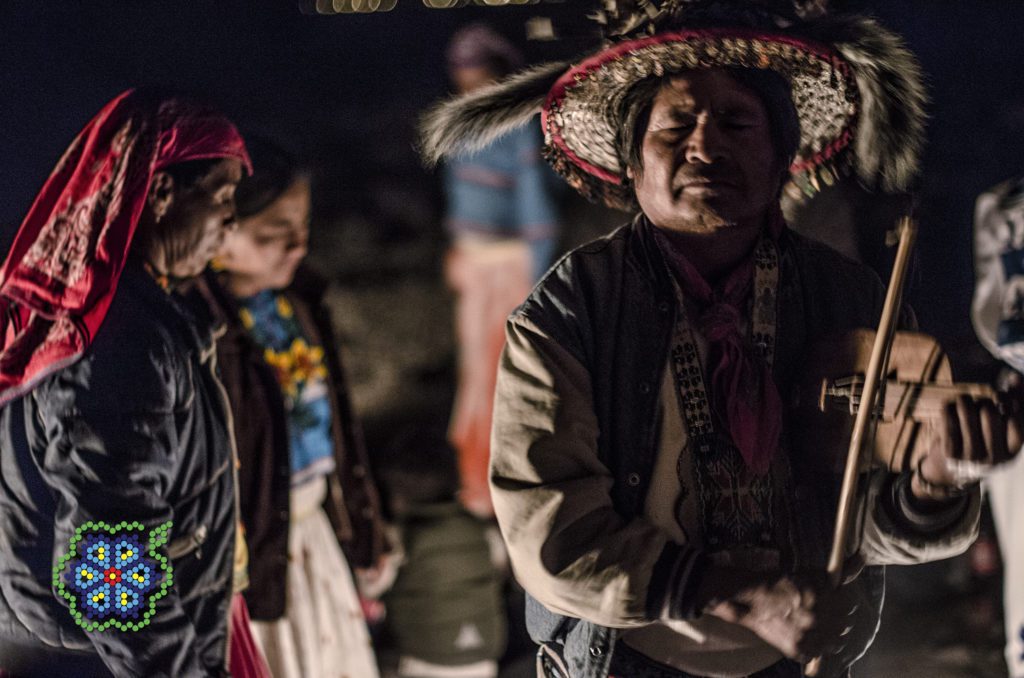
Tracy: I know you have gone many times before to the Cerro Quemado, to Real de Catorce, but in a ceremonial way. How was it for you to go this time, in this context?
Katira: When we went to the ejidos (communities), people were very interested; they all knew about it, because some are concerned about their water, the springs, and this made me feel that – of course it made me sad, because if they do this type of work, personally it made me feel really sad for them, because some of them are now old, they have their experience, and it was sad, because if they do this work, and contaminate the water for the families… it made me very sad.
Tracy: Did you have many conversations with people from there?
Katira: Yes, we spoke with our hearts and personally, and there aren’t that many who are in favor of the mining. What they did in Catorce and La Luz and Coronado, many people came from there, and in favor of their water, in favor of us.
Tracy: Katira, I’d like to know your dream, your hopes for this movie.
Katira: It’s something very deep, realizing that beyond where we can see, the prophecy, the knowledge, the medicine man with his sacred seed, he goes waking up the people, waking the soul, the mind. This dream is was very special for me because it’s what really I am here for: to share the message to care for the planet, for all of humanity.
I hope this presentation opens a path for a film presentation tour – because there are many people who want to support us but we have to see if it will be possible.*
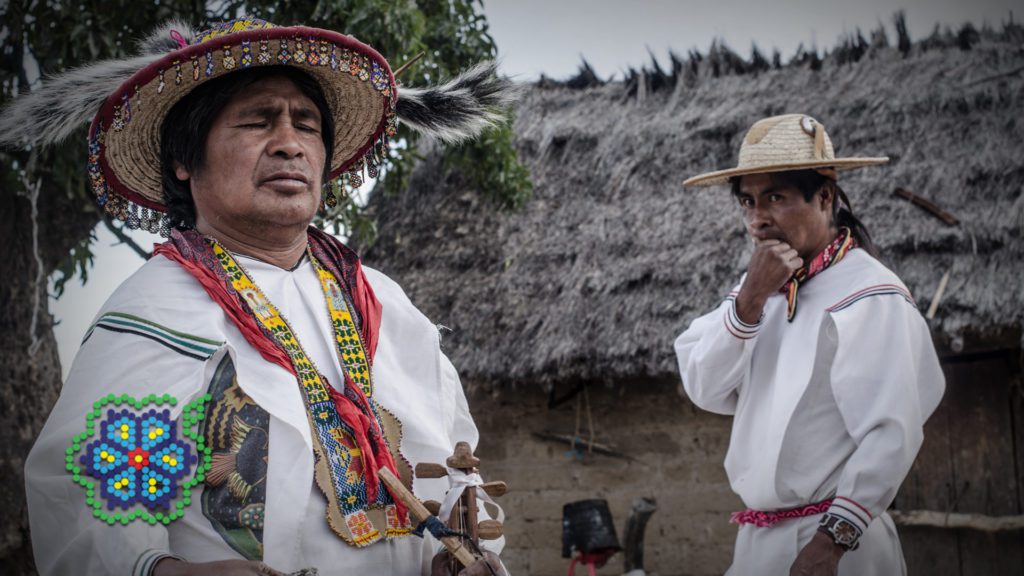
Paola: The intention, of course, is that we want to do tours – South America, the U.S. and Canada, and Europe. Now we have to rest a little from this; we have hundreds of e-mails where they ask us to bring the film – but it’s a little bit expensive. We’d like to bring five or six Wirras (Wixaritari or Huichols), José Andrés, Hernán and I … the thing is to combine, to travel …to join forces and go to these regions – and in Mexico, of course, also to go to present in different places.
It’s a little bit complicated because the Ramírez family also has their agricultural and ceremonial calendar, but yes it interests us to be able to take this film and travel together.
We hope people will organize showings to support us with the diffusion of the message. On the website we explain how to organize a showing. Right now everything is online. If they require the presence of the production crew and the Ramírez family, this implies a bigger cost. We have to get passports, all of this. You traveled to Vancouver with the Wixaritari authorities….you know what it takes.
So we can’t get ahead of ourselves because we want to do things well. People are very anxious to see it – it was a huge effort for us, emotionally, economically and also organizationally.
The thing is, we’ve incorporated into this marvelous family – to live together for 20 days, now we know each other, we know how we are together. It’s a beautiful feeling that we can put together these journeys, and their presence is very important.
Obviously right now we’re on the Web – it’s important to do the distribution of this movie on demand, because with 4 dollars by 4 dollars, we’ll recover some of what we’ve spent in the production, and also to continue with the promotion and the distribution. We’re trying to stay with independent theaters and we are the distributors and we will manage our agenda.
But yes, we are going to travel, Katira. (Katira smiles) He has received a lot of invitations from all over the country, from Tijuana, San Luis Potosí, Querétaro – everyone wants to project the film. We’re currently working on organizing that.
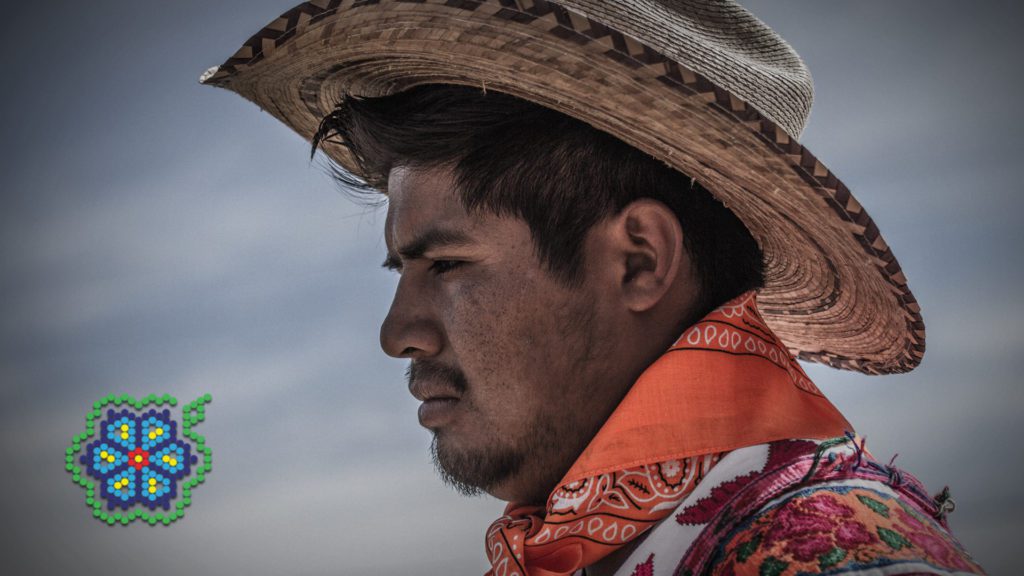
Tracy: Clemente, what was the reaction of your teachers, your classmates?
Clemente: Our school’s director has gone many times to the Wixárika communities, and he told us to never forget our roots. So I told him about the pilgrimage and he said it wasn’t a problem; rather, he supported me to learn the material and said I had to learn the other cultural, spiritual material, too.
At the beginning I didn’t know the film would be different. You know there are films that have been made with our companions in the community but it was different. It wasn’t until later that I realized it would be a film about all the people who were interested in defending Wirikuta. The film isn’t just of one family or one community; it’s about everything, at the national level. It’s something very big for us.
Tracy: How was it for you to be in Real de Catorce, knowing all the tension that has existed in the community surrounding the mining issue?
When we went to Real de Catorce I didn’t know how the people would react. I was afraid they’d confront us for the fact that we were against the mine. If something would happen – honestly we didn’t know how the people would react. I was really afraid in Real de Catorce.
Tracy: So what happened? What did people say to you?
Clemente: (laughing) I hid a little bit. I never was in the front. Instead I was in the back behind a lot of people so they wouldn’t ask me questions, because maybe they were going to argue.
When the film ended many people applauded, and in this moment I felt like we were doing something that is nothing more than part of us, as the Wixárika people. I think they understood a little bit about what it is that we do in the pilgrimage. That we are not against them; rather, they understood this is a union between the Wixárika people and the mestizo people of the pueblo.
Tracy: Clemente, the readers of this article will be all over the world, and many of them have never heard of Wirikuta; they will never go there, and many maybe haven’t even heard of the Huichol people. Why should readers like that care about this issue? Why would it be important to them?
Clemente: There are a lot of lessons in Wirikuta, for us and for everyone else. Many people think we just go to leave our offerings. It’s really much more than that; we are going to receive the energy and the light the dawn gives us. It teaches us a lot, listening to the words of the elders. One arrives being in the moment, listening to the words of the marakame – if you haven’t been there, it’s hard to understand what it is we are defending. The energy is felt the moment you are there. The truth is when one consumes a piece of Hikuri (peyote), that is where you understand, you find the sense of why we are going on the pilgrimage, going to the sacred places.
Katira: I think it’s very clear we are defending the life of human beings. We are defending the sacred territory, and after this we are defending life on the whole planet. We are also defending the hikuri. For other people the hikuri is nothing, because they don’t know what it is, they’ve never tried it.
I think with the presentation of this film, they will understand – it’s not just defending the hikuri and the sacred place. We are defending life, defending a people, so we can continue to do our ceremonies, we are the ones who are the last ones, so this doesn’t come to an end, because there are various indigenous communities that have lost everything.
What they want to do is tear the heart out of our temple. This cannot be, because we are the priests of the Huichol world, and there is our temple. How is it that someone can go and tear it down and rip out its heart? Well, no. This mine, this gold is the heart; that’s what speaks, that’s what’s connected to the five cardinal points, and that is important for us. We must save this place.
Tracy: Katira, what do you believe will happen in the world if Wirikuta is destroyed?
Katira: We have realized there are many earthquakes, many problems, híjole, the Mother defends herself too, and why not? It could be the end of us, we have to defend it. We have to each give our grain of sand. So for us in San Andrés Cohamiata this is the task.
The film can be viewed online for $3.99 at huicholesfilm.com. Anyone who is interested in organizing a film screening or supporting the effort may contact the director at [email protected].
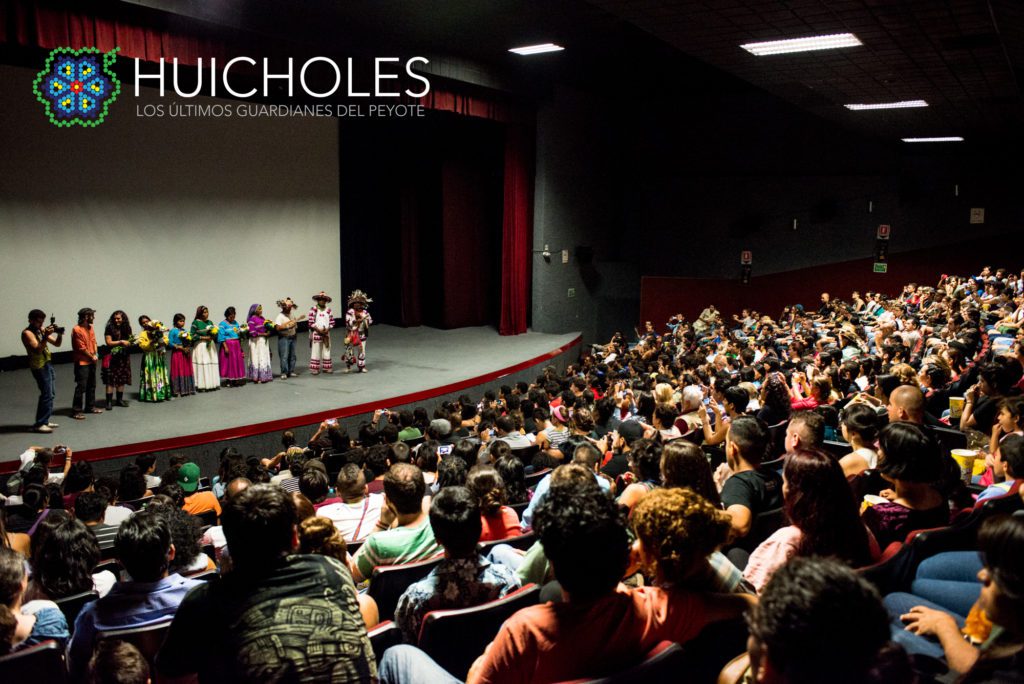
environment Huichol Latin America Mexico mining Peyote Real de Catorce Wirikuta Wixarika